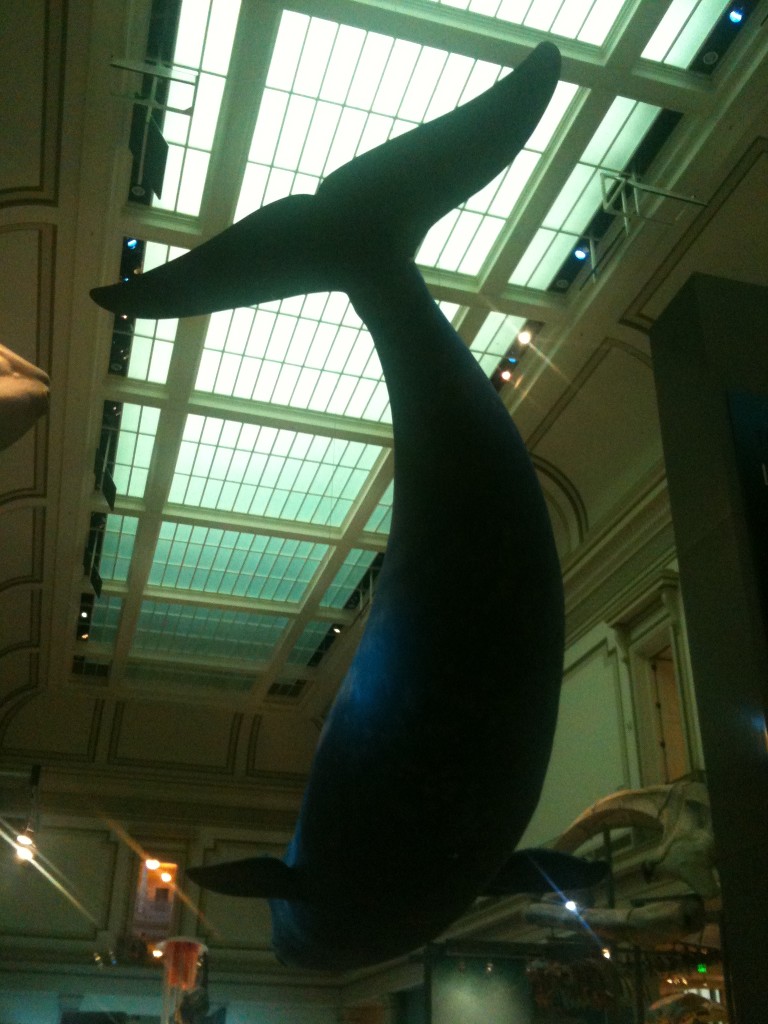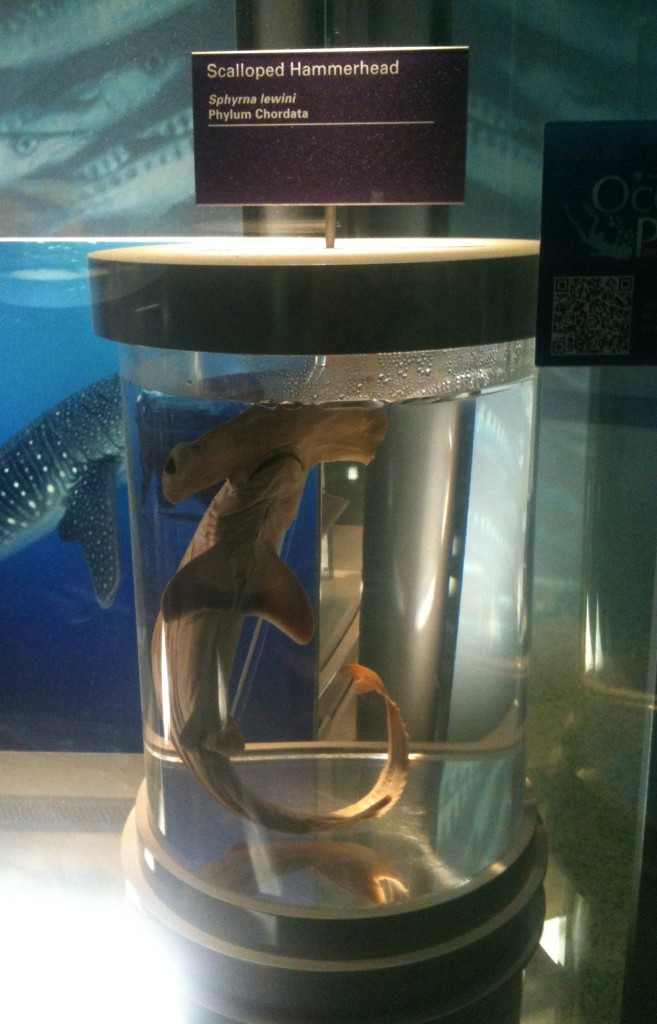I’m lucky enough to live and work in the DC metro area, one of the biggest reasons I love this city (besides being able to feel the thrill and excitement of the Inauguration this past weekend) is the access to free museums. If you’re an ocean lover you might be surprised to know that there are some great spots to visit in DC in between all of the historical monuments you’re checking out. One of my favorite spots to check out on a rainy afternoon in the extension of the National Aquarium on 14th Street. Another fantastic spot would be the Sant Ocean Hall in the Smithsonian Institute’s National Museum of Natural History. It is the largest and one of the newest exhibits in the museum and contains over 674 specimens, including a replica of a 45-foot-long North Atlantic Right Whale (pictured below), fish x-rays, a scalloped hammerhead (below), and a giant squid! I cannot wait to visit next month when there’s an exhibit of underwater pictures by Brian Skerry (check out his National Geographic Ocean Soul book here). The next time you’re in DC you have to make a point to visit, as they say “like the real ocean, the deeper visitors explore – the more they will discover”. My two-year old loved all of the interactive exhibits and the space was buzzing with enthusiastic school children. I was particularly happy that the exhibit hall was large enough that we were never on top of anyone and could always escape the ‘enthusiastic school children’. Here are some pictures from my visit on Friday.























What people are saying …